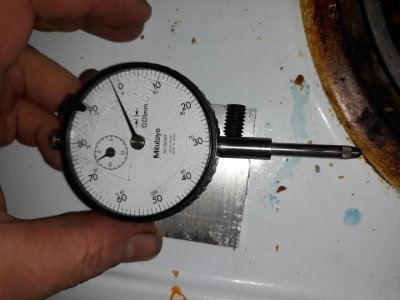- Joined
- Nov 27, 2012
- Messages
- 7,912
40 years mucking around with this stuff and I don't think I've ever heard that phrase.
That's what I was taught, that phrase was burned into my mind, remembering that alone has made it much easier for me.
The very first project in that machining course, well second project, first to use the mill, was a C-clamp. The way he taught to set the part in the vise & direction to make the cut made it easy for me to remember climb vs conventional cutting. To this day I still picture that part if I ever get confused.


